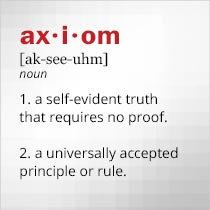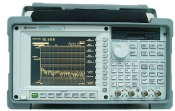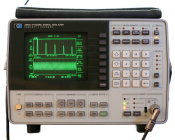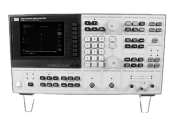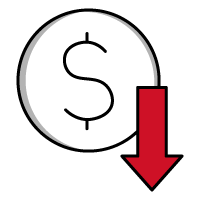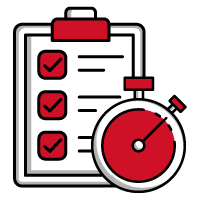Stanford Research SR780
Dynamic Signal Analyzer, DC - 102.4 kHz, 2 Ch.
Analyzers >> Dynamic and FFT Analyzers >> Dynamic Signal Analyzer, DC - 102.4 kHz, 2 Ch.Model: SR780

|
Product Overview
RENT STANFORD RESEARCH SR780 Dynamic Signal Analyzer (call for availability)
The SR780 Dynamic Signal Analyzer combines high performance and low cost in a full-featured package. It offers 102.4 kHz dual-channel FFTs with 90 dB dynamic range, 145 dB dynamic range swept-sine measurements, real-time ANSI standard octave analysis, waterfall displays and transient capture for less than half the cost of other similarly equipped analyzers.
Whether your application involves acoustic measurements, vibration testing, servo systems or filter design, the SR780’s features, performance and low cost are unmatched.
Features and Specifications of the Stanford Research SR780 Dynamic Signal Analyzer include:
- DC to 102.4 kHz bandwidth
- 90 dB dynamic range
- Low-distortion synthesized source
- 145 dB dynamic range in swept-sine mode
- Real-time octave analysis
- Up to 32 Mbyte memory
- GPIB and RS-232 interfaces
- Measurement Groups:
- FFT: FFT, Time Record, Windowed Time, Time Capture, Transfer Function, Cross Spectrum, Coherence, Cross-Correlation, Auto-Correlation, Orbit, User Math
- Octave Analysis: 11/1, 1/3, 1/12 Octave, Time Capture, User Math, Leq, Impulse, Total Power
- Swept-Sine: Spectrum, Transfer Function, Cross Spectrum, User Math
- FFT Resolution: 100, 200, 400, 800 lines
- Views: Linear Magnitude, Log Magnitude, Magnitude Squared, Real Part, Imaginary Part, Phase, Unwrapped Phase, Nichols, Nyquist
- Units: V, V2, V2/Hz, V/vHz, meters, inches, mils, g, kg, lbs., N, dynes, pascals, bars, SPL, user-defined engineering units (EUs)
- Displays: Single, Dual, Waterfall with Skew, Zoom and Pan
- Averaging: RMS, Vector, Peak Hold, Linear, Exponential, Equal Confidence (Octave), Preview Time Record
- Triggering: Continuous, Internal, External (Analog or TTL), Source, Auto/Manual Arming
- Source Outputs: Sine, Two-Tone, Swept-Sine, White/Pink Noise, Burst Noise, Chirp, Burst Chirp, and Arbitrary
- Windows: Hanning, Blackman-Harris, Flat-Top, Kaiser, Force/Exponential, User-Defined, +/-T/2, +/-T/4, T/2, Uniform
- User Math: +, -, ×, /, Conjugate, Magnitude/Phase, Real/Imaginary, Sqrt, FFT, Inverse FFT, jO, Log, Exp, d/dx, Group Delay, A-, B-, C-Weighting, x/x-1
- Analysis: Harmonic, Band, Sideband, THD, THD + N, Limit Test with Pass/Fail, Data Table, Exceedance, Statistics
- Time Capture: Captures time data for later analysis (FFT or Octave). Up to 2 Msamples (8 Msamples optional) of data can be saved.
- Storage: 3.5", 1.44 Mbyte, DOS formatted disk. Save data and setups.
- Frequency:
- Range: 102.4 kHz or 100 kHz (both displays have the same range)
- FFT Spans: 195.3 mHz to 102.4 kHz or 191 mHz to 100 kHz. The two displays can have different spans and start frequencies.
- FFT Resolution: 100, 200, 400 or 800 lines
- Real-Time Bandwidth: 102.4 kHz (highest FFT span with continuous data acquisition and averaging)
- Accuracy: 25 ppm from 20 °C to 40 °C
- Dynamic Range:
- Range: 90 dB typical, 80 dB guaranteed (FFT and Octave). 145 dB (Swept-Sine). Includes spurs, harmonic and intermodulation distortion and alias products. Excludes alias responses at extremes of span.
- Harmonic Distortion:
- Intermod Distortion:
- Spurious:
- Alias Responses:
- Full-Span FFT Noise Floor: -100 dBfs typ. (input grounded, >-30 dBV, Hanning window, 64 rms averages)
- Residual DC Response:
- Amplitude Accuracy:
- Single Channel: ±0.2 dB (excluding windowing)
- Cross Channel: ±0.05 dB (transfer function measurement, both inputs on the same range, rms averaged, DC to 102.4 kHz)
- Phase Accuracy:
- Single Channel: ±3.0 deg. relative to external TTL trigger (-50 dBfs to 0 dBfs, frequency
- Cross Channel:
-
- ±0.5 deg. (DC to 51.2 kHz)
- ±1.0 deg. (DC to 102.4 kHz)
- (transfer function measurement, both inputs on the same input range, vector averaged)
- Signal Inputs:
- Number of Inputs: 2
- Full-Scale Input Range: -50 dBV (3.16 mVp) to +34 dBV (50 Vp) in 2 dB steps
- Maximum Input Level: 57 Vp
- Input Configuration: Single-ended (A) or differential (A-B)
- Input Impedance: 1 MO + 50 pF
- Shield to Chassis:
- Floating mode: 1 MO + 0.01 µF.
- Grounded mode: 50 O. Shields grounded in (A-B) mode
- Max Shield Voltage: 4 Vp
- AC Coupling: 0.16 Hz cutoff frequency
- CMRR:
- 90 dB at 1 kHz (input range
- 80 dB at 1 kHz (input range
- 50 dB at 1 kHz (input range =10 dBV)
- ICP Signal conditioning:
- Current Source: 4.8 mA
- Open Circuit Voltage: +26 V
- A-Weight Filter: Type 0 tolerance, ANSI standard S1.4-1983 (10 Hz to 25.6 kHz)
- Crosstalk:
- Input Noise:
- Trigger Input:
- Modes: Free run, Internal, External, or External TTL
- Internal: Level adjustable to ±100 % of input scale, positive or negative slope.
- Min Trigger Level: 5 % of input range
- External: -Level adjustable to ±5 V in 40 mV steps, positive or negative slope.
- Input Impedance: 1 MO
- Max Input: ±5 V
- Min Trigger Amplitude: 100 mV
- External TTL: Requires TTL level to trigger (low 3.0 V)
- Post-Trigger: Measurement record is delayed up to 8192 samples after the trigger.
- Pre-Trigger: Measurement record starts up to 8192 samples prior to the trigger.
- Transient Capture:
- Mode: Continuous data recording
- Maximum Rate: 262,144 samples/s for both inputs
- Maximum Capture Length:
- 2 Msamples (single input)
- 8 Msamples with optional memory
- Octave Analysis:
- Standards: Conforms to ANSI standard S1.11- 1986, Order 3, Type 1-D and IEC 225-1966
- Frequency Range (Band Centers):
- Single Channel:
- 1/1 Octave : 0.125 Hz to 32 kHz
- 1/3 Octave : 0.100 Hz to 40 kHz
- 1/12 Octave : 0.091 Hz to 12.3 kHz
- Two Channels:
- 1/1 Octave : 0.125 Hz to 16 kHz
- 1/3 Octave : 0.100 Hz to 20 kHz
- 1/12 Octave : 0.091 Hz to 6.17 kHz
- Accuracy:
- Dynamic Range: 80 dB (1/3 Octave, 2 second stable average) per ANSI S1.11-1986
- Sound Level: Impulse, Peak, Fast, Slow and Leq per ANSI S1.4-1983 Type 0 and IEC 651-1979 Type 0
- Source Output:
- Amplitude Range: 0.1 mVp to 5 Vp
- Amplitude Resolution: 0.1 mVp (output >500 mVp)
- DC Offset:
- Offset Adjust: ±5 VDC (sine, two-tone)
- Output Impedance:
- Sine Source:
- Amplitude Accuracy:
- ±1 % of setting, 0 Hz to 102.4 kHz
- 0.1 Vp to 5.0 Vp, High-Z load
- Harmonics, Sub-harm & Spurious:
- 0.1 Vp to 5 Vp
- Two-Tone Source:
- Amplitude Accuracy:
- ±1 % of setting, 0 Hz to 102.4 kHz
- 0.1 Vp to 5 Vp, High-Z load
- Harmonics, Sub-harm:
- 0.1 Vp to 2.5 Vp
- White Noise Source:
- Time Record: Continuous or burst
- Bandwidth: DC to 102.4 kHz or limited to span
- Flatness:
- 5000 rms averages
- Pink Noise Source:
- Bandwidth: DC to 102.4 kHz
- Flatness:
- Chirp Source:
- Time Record: Continuous or Burst
- Output: Sine sweep across the FFT span
- Flatness: ±0.25 dB (amplitude: 1.0 Vp)
- Swept-Sine Source:
- Auto Functions: Source level, input range and frequency resolution
- Dynamic Range: 145 dB
- Arbitrary Source:
- Amplitude Range: ±5 V
- Record Length: 2 Msamples (playback from arbitrary waveform memory or capture buffer). Variable output sample rate.
- General:
- CTR Monitor: Monochrome, 800H by 600V resolution
- Interfaces: IEEE-488.2, RS-232 and printer interfaces standard. All instrument functions can be controlled through computer interfaces. A PC (XT) keyboard input is provided for additional flexibility.
- Hardcopy: Print to dot matrix and PCL compatible printers. Plot to HP-GL or postscript plotters. Print/plot to RS-232 or IEEE-488.2 interfaces or to disk file. Additional file formats include GIF, PCX and EPS.
- Disk: 3.5" DOS format, 1.44 Mbytes
- Preamp Power: Power connector for SRS preamps
- Power: 70 W, 100/120/220/240 VAC, 50/60 Hz
Other model of Stanford Research Dynamic Signal Analyzer is SR785.
REQUEST A QUOTE
| Testimonials |
|
We received the unit today. Thank you for this. Your team did an excellent job. -- Bruce D. Phoenix, AZ |


